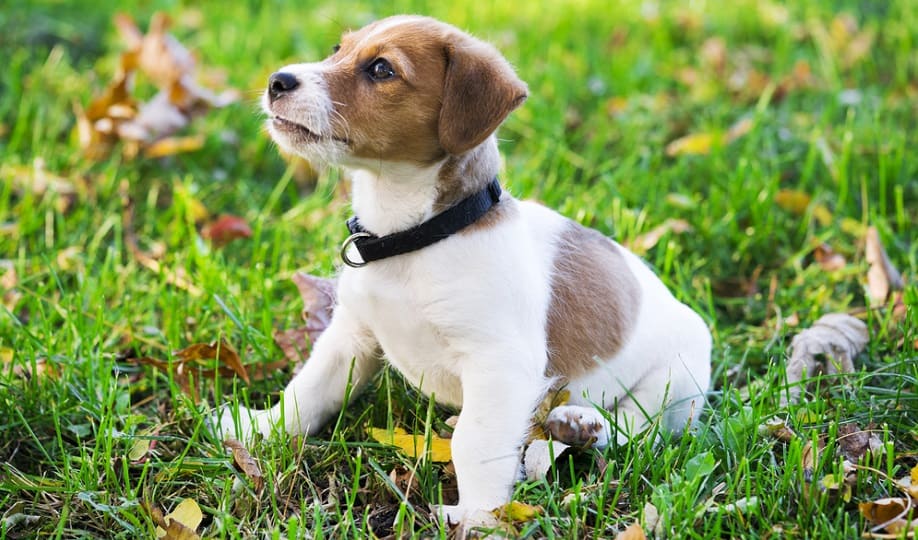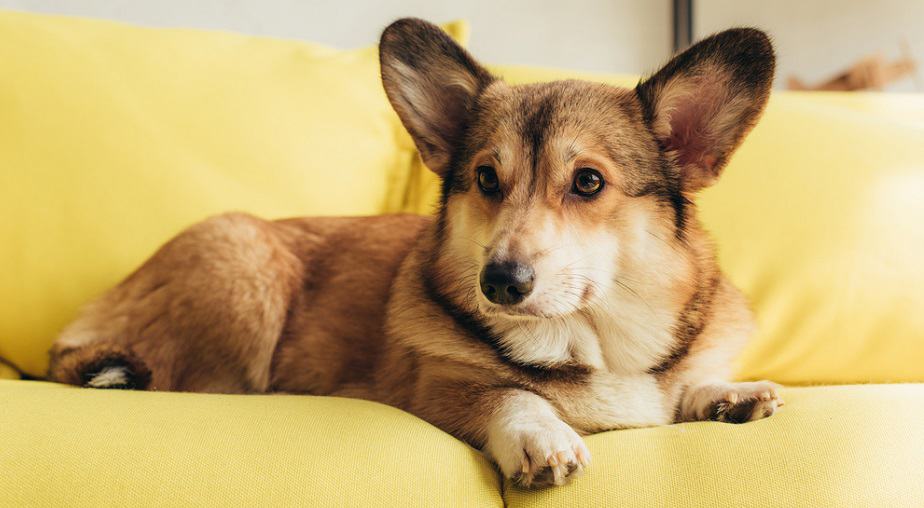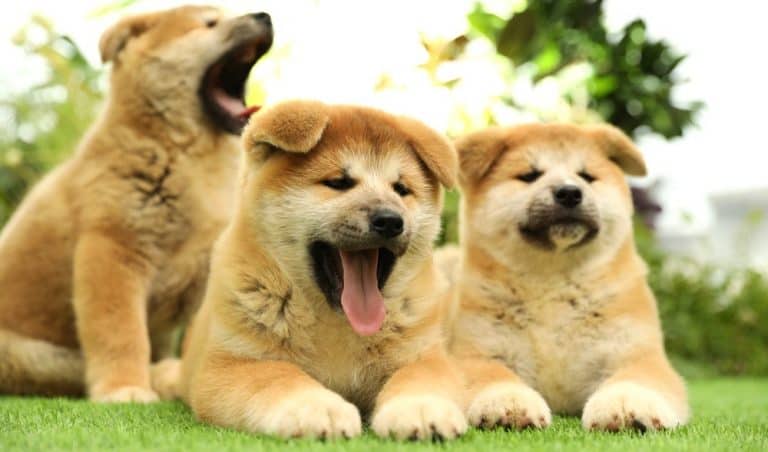Dog Sitting Position Meaning
Your dog’s sitting position can reveal a lot about his health, happiness, and mood. If you study your dog’s body language through his readable habits, you will be able to decipher the meaning of his sitting position.
Sleeping and sitting positions seem to be common across all breeds of canines.
Just like humans have body language that can be read by others, dogs have body language that displays their thoughts and feelings at a given time.
The most obvious is how a frightened dog cowers in fear or an aggressive dog charges confidently. These are all physical indications of inward emotion.
Your dog’s sitting position can tell you a lot but where he sits can tell you even more. Your dog may sit on your lap, or he may sit with his legs outstretched on the floor. These sitting positions reveal your dog’s mental state at the time.
The dog sit seems to be common across all the dog breeds. It also seems to be a command canines are naturally inclined to.
If you would like to gain a deeper perspective into your dog’s thoughts and feelings based on their sitting position then this is the article for you. It will help you to evaluate the sleeping and sitting position of your dog.
What To Look For In My Dog’s Sitting Position

The way your dog sits could have positive connotations like his attempts to bond with you or negative connotations like an underlying health issue. When puppies sit with outwardly splayed limbs it is seen as completely normal because their joints are flexible.
When older dogs do this, and they haven’t done it for a while, it could be a cause for concern. You should have your dog checked by a vet if they suddenly start you doing this.
Your dog may be suffering from issues related to his joints and muscles such as arthritis, muscle inflammation, joint stiffness, and pain in the spine. These conditions may occur gradually or suddenly, but you need to look for the signs to be able to help.
Your dog may be sitting in such a way that the pain does not affect him. This pain may occur in his muscles, back, or joints.
The most important thing is to look for a change in behavior where sitting practices are concerned. Also, look out for your dog uncomfortably switching positions as he tries to relieve the pain.
Your dog could have hip dysplasia which causes pain, so he shifts his weight from leg to leg in an attempt to get comfortable.
The pain is caused by inflammation, and you may sometimes see him walking around to avoid it. He may also have a torn ligament in one of his legs forcing him to stretch out the unaffected leg while he sits down.
Sitting Positions And Their Meaning

The Puppy Sit
This position is sometimes called the frog sit, the sloppy sit, or the lazy sit. Young puppies use this sit the most. This is when your dog has his legs splayed on one or both sides as he is sitting. It is a sloppy posterior but is necessary as dogs grow.
As puppies develop they will enter growth stages that are uncomfortable to their bodies, so they sit in awkward positions.
Therefore, if you see a puppy in this position you have nothing to worry about. Sometimes during one of their awkward growth stages, they may develop a limp, or they may have a lazy posture as their body adjusts.
Remember that young puppies have soft bones which are flexible because their joints aren’t connected yet. This is also the reason why they may have an uncoordinated range of motion while walking and running. They also sit awkwardly.
If you carefully monitor your dog, you will know that when he is tired or bored he also tends to resort to the puppy sit. So find ways to ensure go down is mentally and physically engaged so that they do not get bored. This also applies to training sessions.
While your dog is still growing up, you should do your best to monitor them but don’t read too much into health-related issues based on sitting position.
Sloppy sitting should be expected as they develop, but it may be harmful so try to discourage the behavior as it may damage their joints.
The Lazy Dog Sit
When your puppy has the lazy dog sit, it is quite normal. But if he has grown out of it, and then you suddenly notice that he has started to do it again, it could be a cause for concern.
It could be an underlying health issue that is prompting him to have this posture. Also, make allowances for your dog’s fatigue once in a while.
For example, if your dog has been playing more than usual and plopped down in that position then you can excuse it, but if he usually sits like that, and then he needs to be checked out.
You should have a better understanding of the types of conditions that may affect your dog in adulthood to conclude his change in sitting posture. There are also a few instances where you can prevent these conditions.
The luxating patella or hip dysplasia is a common cause of sore joints in dogs leading to awkward sitting positions to make them more comfortable.
Usually, when a dog has arthritis or spinal and joint problems, they are unable to sit straight with good posture.
Skeletal damage caused by some type of accident or trauma may lead to your dog having a bit of trouble with his back or joints.
This problem may go away with healing or be permanent for your dog based on the extent of the damage, but he would compensate by sitting In a way that he feels comfortable.
If your dog usually sits like this it could mean that something is wrong with his health. Have your dog checked out by a veterinarian to ensure that nothing is wrong. If something is wrong early diagnosis can always help.
Dogs Sitting Like Humans
Many of us find it funny when our dogs sit like humans or do human activities. However, when dogs sit like humans, we may want to know the cause of the behavior. Whenever your dog sits like this it could be because he is imitating you.
If your dog sits like this often, and he also has stiffness whenever he walks, then you need to take him to the vet. This position takes the pressure off of their lower spine, so they may be sitting like this to get some relief.
Dogs like the Great Dane who have long legs need to sit a bit more than breeds who have smaller legs. Because this behavior is met with laughter and appreciation, your dog may repeat the behavior as it is reinforced.
The most important thing is to monitor your dog for signs of discomfort in whatever posture they display.
The Straight Sit
There are many strange positions practiced by dogs, but the straight sit is encouraged. The straight sit is taught to puppies when they are young. This type of posture will help them to prevent back pain and other issues later on in life.
Your dog’s spine is usually upright with two knees at his sides. He will also have his feet beneath him. Your dog in this position should have a perfectly straight spine and his knees should symmetrically be at both sides.
Dogs must practice good posture just like it is with human beings. When dogs display the straight sit, it means that their spine is healthy. This is why it is taught in obedience schools because it is a dog’s healthiest sitting position.
Dog Sitting By Your Feet
Dogs enjoy spending time with their favorite humans because they are pack animals. Whenever they sit at your feet, they see it as a sign of bonding, so they stay close. If your dog is fearful of something it can also help to reassure him by being close to you.
Your dog views you as the role model and leader, whose directions he should follow. So if you choose a resting spot, it means that that is the best place to sit which is why your dog would follow you. They may even snuggle close to you to get your attention.
Since this position just means that your dog loves you, there is nothing you should be worried about. Some dog owners may be irritated by the invasion of personal space by their dog.
For these people, a stuffed toy in their dog’s bed usually does the trick. In most cases, it is a good thing to set time aside for bonding with your dog.
Dog Sitting By Your Face
If your dog likes to place his rare on top of you, this means that they are scent marking. your dog would like to make his claim for you to be a part of his pack. This weird type of cuddling is a sign that your dog wants to be near you.
This could also mean dominance, but it is not likely that your dog will do this. In most cases, this is your dog attempting to form a closer bond with you.
It can also be behavior that he has learned from you and is simply a habit. Some dogs also try to get a reaction out of their owners by engaging in strange behavior.
If you want your dog to stop doing this, then you need to communicate that this behavior is not acceptable. Your reaction to this behavior should not encourage him to do it again in the future.
Ensure that your dog is comfortable by preparing a dog bed for him with comfortable blankets. This will reduce the need for him to cuddle with you.
Dog Sitting On Other Dogs
There are two main reasons for your dog cuddling or sitting on other dogs. These are for dominance or play. Your dog could be displaying dominance by placing his head or paw on another dog’s back. They may also sit on another dog’s head as well.
You should not take the term dominance as a personality trait of your dog. Most of what your dog does is instinctual. In this case, dominance refers to a social relationship involving your dog.
It could also be a playful gesture. As dogs play they may end up in many types of positions. In this case, both the dogs would be comfortable and relaxed.
Why Does My Dog Sit On Me?
We should not only monitor a dog’s sitting position but also where they choose to sit. This is usually a sign that your dog wants to interact with you and in most cases, it is perfectly natural.
Dominance: If your dog is sitting on your lap with the intention of dominance then this is not a good sign. A dog sometimes tries to assert their dominance by sitting on you so that you will be under them.
You need to curtail this behavior immediately and establish yourself as the authority with your dog.
Breed Specific: Smaller dog breeds enjoy sitting on their owner’s lap because it is a safe space for them to enjoy the company of their favorite human. Sometimes you will notice bigger dogs sitting on their owner’s laps as well, but it can be quite uncomfortable.
Security: Your dog may seek protection from you and attempt to sit on your lap. This means that they are confident that you will protect them.
Attention: When your dog is looking for attention, he may come and sit on your lap so that you can focus on him.
Why Does My Dog Sit In My Spot When I Get Up?

Some dogs jump into your spot as soon as you get up. They do this for several reasons. Your dog may love you so much, that they would like to sit wherever you are or where you have been.
They want to inhale your scent as well the revel in the warm spacing you have created.
In rare cases, your dog may be trying to exert dominance and the way you can tell is when they don’t try to jump back in their original spot like most of them tend to do.
Your dog may be suffering from separation anxiety if they look scared as soon as you walk away. Seek help for your dog if this is the case.
Why Does My Dog Want To Sleep In My Bed?
It is not just the company and warmth your dog is after when they attempt to sleep in your bed. Remember that dogs have wolf ancestors who typically sleep in packs to reduce their vulnerability.
As a group, they would be able to keep themselves warm as well as defend themselves from possible attacks. Your dog may be after safety and security along with warmth.
If you allow your dog to sleep in your bed, make sure that he is in the position that you decide. It sets a bad precedent when he is allowed to sleep in any position of the bed. Most dogs love this as they get to spend the night being close to you.
Sleeping Positions And What They Mean?
Because of your dog’s lineage, his sleeping habits may go back a long way. These habits are common to all breeds, but they could have slightly different meanings depending on your dog’s situation. The most common sleeping positions are:
Superman: You will mostly find smaller dogs doing this because larger breeds have in this pose. This is when your dog lies on his stomach with his legs outstretched in the rear and the front. It means that your dog is relaxed and safe in his environment.
Side Sleeping: You will sometimes find your dog sleeping on his side with his legs outstretched. He is usually in a deep sleep and is comfortable. Because this is a vulnerable position it means that your dog is safe and relaxed at that point.
Lion Pose: Your dog will sometimes rest lightly with his head on his front paws. They are just resting and typically do not enter a deep sleep while in this pose.
Curled in a Ball: If you find that your dog curls in a ball, then it may be too cold for them so adjust the temperature off of the room.
Your dog could also be feeling unsafe, so he’s trying to make himself as small as possible. Often, dogs who live in shelters take on this pose especially if they have been abused.
Final Words
Your dog’s sleeping and sitting position is a good way to gauge their state of mind as well as their emotion. You can also spot early signs of disease by paying special attention to their posture and behavior.
This is especially important for dog breeds who are more prone to joint issues. Usually, early detection will give your dog a better chance because the veterinarian will be able how to treat the problem before it gets worse.






